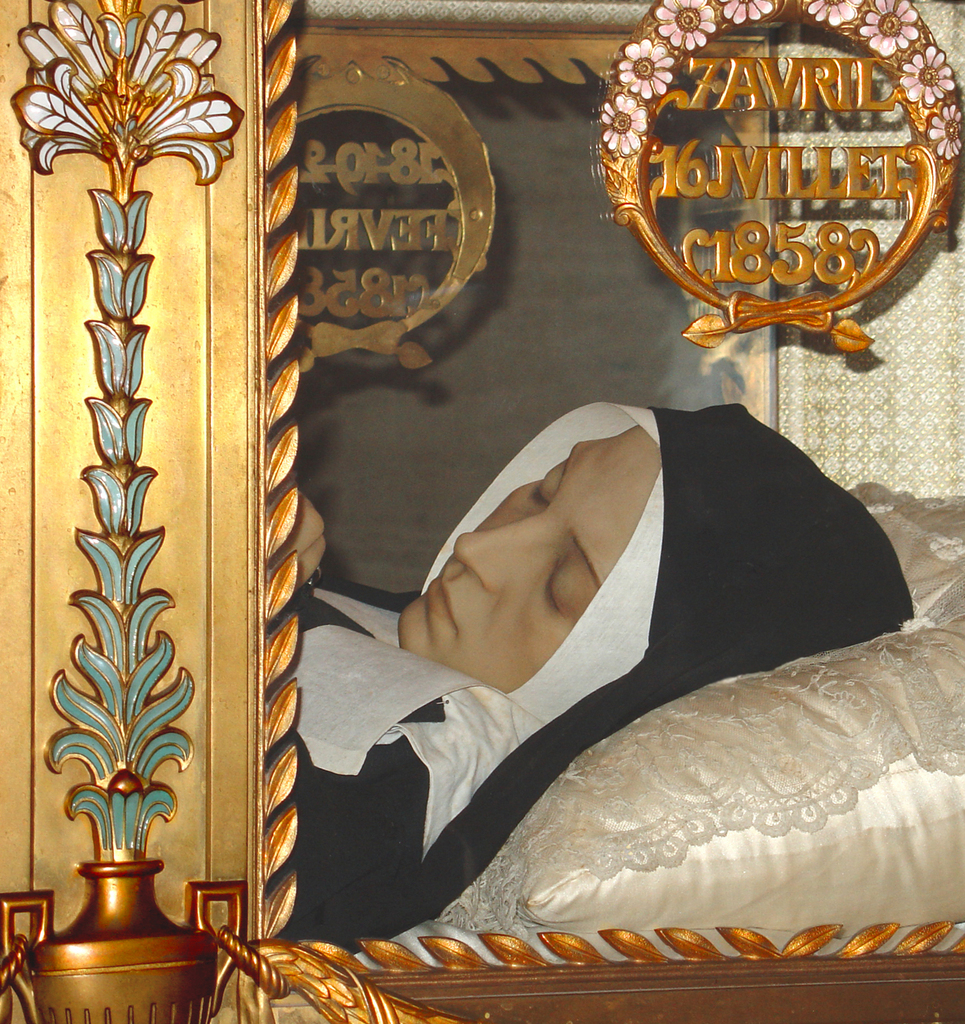
Incorruptible Bodies Of The Saints;Amazing, Beautiful, And Other
A common objection to incorruptibility is the idea that the body either must have been deliberately preserved, a practice since ancient times, or that the conditions of the grave or tomb allowed for natural preservation. In at least one case, modern scientific examination has found that a saint previously believed to be incorrupt was likely not.

Incorruptible Bodies Of The Saints;Amazing, Beautiful, And Other
The incorrupt bodies of some saints are understood to be a sign of that promise. Usually, the incorrupt body is taken to a nearby church soon after its discovery and displayed to the faithful.

Incorruptible Bodies Of The Saints;Amazing, Beautiful, And Other
Adding to the confusion around incorrupt saints are the ones who seem perfect but in fact are too good to be true. St. Victoria, a fragmented skeleton, was hauled out of the Roman catacombs at the.

Photographing the Real Bodies of Incorrupt Saints Atlas Obscura
The incorrupt body of St. Camillus de Lellis. His skeleton is not in the effigy, but housed in a compartment underneath, La Maddalena, Rome. The relics of St Wittoria, the skeleton of a catacomb.

Photographing the Real Bodies of Incorrupt Saints Atlas Obscura
Throughout the Catholic Church's history, the bodies of many saints were exhumed after death and found incorrupt. Normally after death, our bodies naturally decompose. As Genesis 3:19 says, "For you are dust, and to dust you shall return." However, there are saints who exhibited such holiness that God preserved their bodies. Even science.

Photographing the Real Bodies of Incorrupt Saints Atlas Obscura
The incorruptible bodies of saints are a consoling sign of Christ s victory over death, a confirmation of the dogma of the Resurrection of the Body, a sign that the Saints are still with us in the Mystical Body of Christ, and proof of the truth of the Catholic Faith—for only in the Catholic Church do we find this phenomenon. Impr. 342 pgs 33.

Photographing the Real Bodies of Incorrupt Saints Atlas Obscura
"The Incorruptibles" (Tan Books, 1977), an overview of the subject by Joan Carroll Cruz, reports no less than 102 stories of incorrupt bodies of Catholic saints. With so many alleged incorruptibles, it is no wonder some of the faithful have wondered whether the preservation of Pope John XXIII's remains might be a sign from heaven.

Photographing the Real Bodies of Incorrupt Saints Atlas Obscura
Throughout the Catholic Church's history, the bodies of many saints were exhumed after death and found incorrupt. Normally after death, our bodies naturally decompose. As Genesis 3:19 says, "For you are dust, and to dust you shall return." However, there are saints who exhibited such holiness that God preserved their bodies. Even science.

Female Medieval Saints Incorruptible Bodies and Heavenly Scents
A fair number of canonized saints were found to be incorrupt when their bodies were exhumed after their death—but when they were reburied, and subsequently unearthed again at a much later date, their remains were found to have decayed naturally. Saints Pierre Julian Eymard and Francis de Sales are good examples of this.

incorruptible body of saints Orbis Catholicus Secundus Incorrupt
The patron Saint of Lucca, of servants, and of lost keys,. Zita is one of the "Incorruptibles" — bodies of Catholic saints that were found to miraculously not deteriorate.

Photographing the Real Bodies of Incorrupt Saints Atlas Obscura
Famous Incorruptible Saints; Incorruptible Saints Today; The idea that some bodies remain more or less in the same condition they were in when a person died doesn't exactly align with our understanding of science. However, that doesn't change the fact that the bodies of some saints have remained relatively preserved long after we would have.

The incorrupt body of St Therese nee Therese de Lisieux She died at age
In many cases, incorruptible saints have remained in such a state for decades. But the ravages of time eventually have an effect on a body -- even a saintly one. While some of the incorruptible saints have taken on a mummy-like appearance over the centuries, the fact that their bodies remain in one piece is something of a mystery. At the very.

Blessed bodies of saints miraculously preserved for centuries Rhode
The recent story of an alleged incorrupt nun in Missouri drew the attention of many to the remarkable phenomenon of incorrupt bodies of the saints.. What's the big deal with incorruptibility and how does it happen? What does incorruptibility mean? Incorruptibility is the preservation of a person's body, after death, from natural decay or decomposition.

Photographing the Real Bodies of Incorrupt Saints Atlas Obscura
First-hand accounts state that these bodies remained soft and have maintained their coloring. This is despite their decay-inducing burial conditions. Some incorruptible saints were buried without a coffin or near other decaying corpses. The corpses of these incorruptible saints are also reported to give off a sweet-smelling flowery scent.

Saint Victoria's Incorruptible Body in 2021 Saint victoria
The body of Mary of Jesus de León y Delgado (1643-1731), Monastery of St. Catherine of Siena found to be incorrupt by the Catholic Church (Tenerife, Spain).. Incorruptibility is a Catholic and Eastern Orthodox belief that divine intervention allows some human bodies (specifically saints and beati) to completely or partially avoid the normal process of decomposition after death as a sign of.

Photographing the Real Bodies of Incorrupt Saints Atlas Obscura
She identified 102 saints or blesseds who are recognized by the Church to be incorrupt. She said there were certainly many more, but these 102 are "the great majority, and certainly the most.